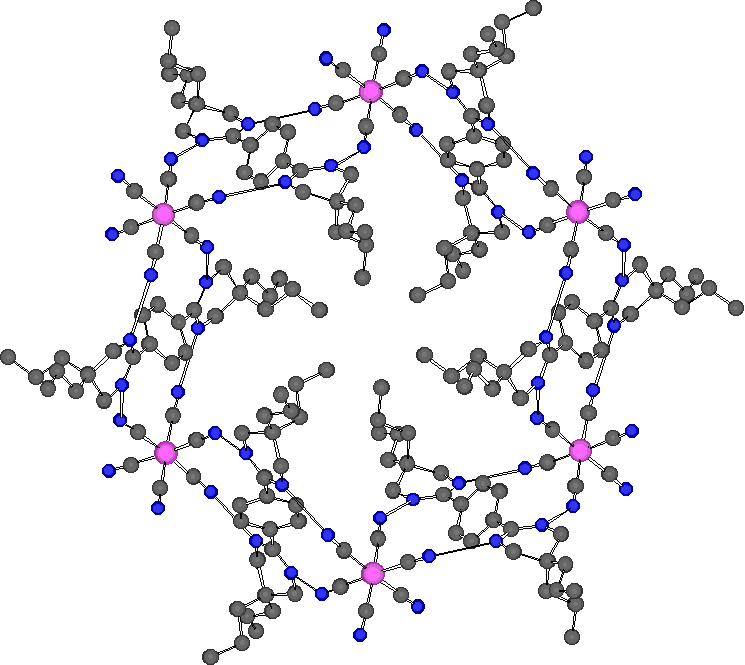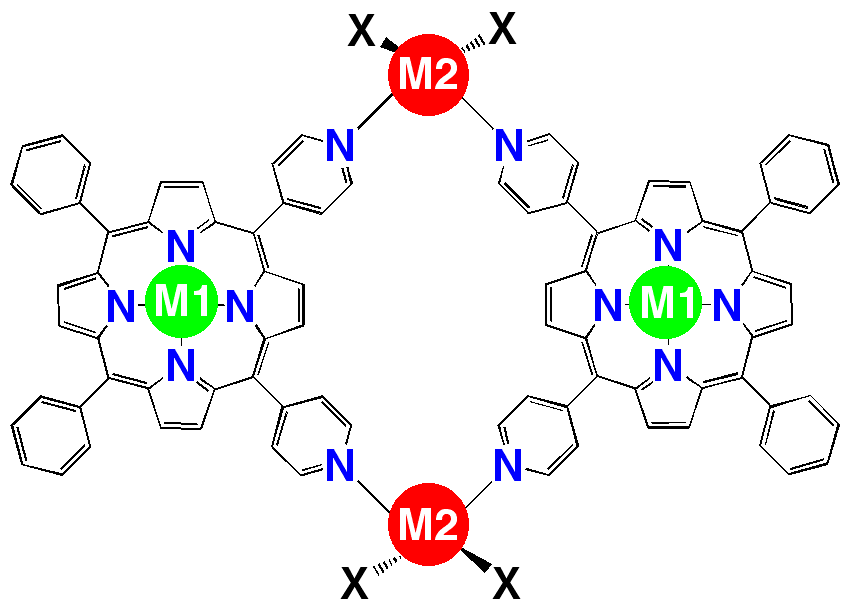Résumés Année 2006
"Molecular tectonics: generation and packing of 1- D coordination networks formed between dibromofluorene based tectons bearing two pyridines and metal halides"
A. JOUAITI, N. KYRITSAKAS, J.-M. PLANEIX, M. W. HOSSEINI, Cryst. Eng. Comm., 2006, 8, 883-889.(download .pdf)
Abstract: The combination of bis-monodentate tectons 4 and 5, based on the dibromo fluorene backbone and bearing two pyridine units connected at positions 3 and 4 respectively, with metal halides acting as metallatectons by offering two free coordination sites leads to the formation of 1-D coordination networks in the crystalline phase as evidenced by X-ray diffraction studies on single crystal. Whereas in the case of tecton 4 and MX22, ZnBr22 and HgCl22
 |  |  |
"Molecular tectonics: generation of 2-D molecular networks by combination of coordination and H bonds"
J. PANSANEL, A. JOUAITI, S. FERLAY, M. W. HOSSEINI, J.-M. PLANEIX, N. KYRITSAKAS, New J. Chem., 2006, 1, 71 - 76. (download .pdf)
Abstract: The combination of two organic tectons 1 and 2 based on 1,4-phenylenediamine backbone functionalised with two pyridine units through amide junctions with HgCl2 leads to the formation of two types of 2-D networks, one of the purely metallo-organic type based on only coordination bonds and the other combining both coordination and hydrogen bonds.
 |  |  |
"Octanuclear Cu(I) cubic complex decorated with six peripheral chalates"
S. BAUDRON, M. W. HOSSEINI, N. KYRITSAKAS, New. J. Chem., 2006, 30, 1083-1086. (download .html)
Abstract: A new ligand bearing an anionic methanedithiolate unit as the primary coordination pole and a neutral chelate based on 4,5-diazafluorene as secondary pole leads to the formation of an air-stable octanuclear Cu(I) cubic complex presenting six peripheral coordinating sites.
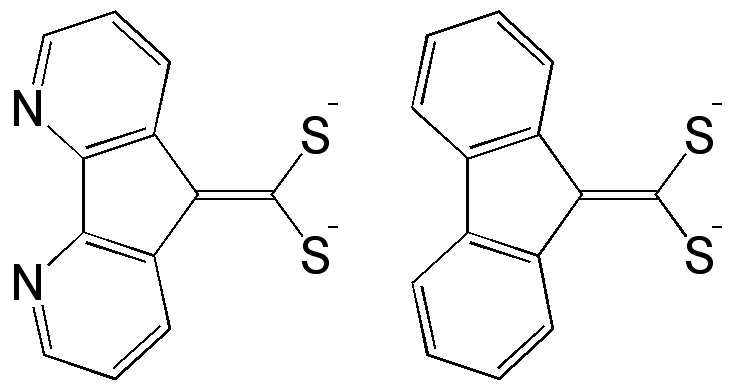 |  |  |
"Molecular tectonics: generation of 1- and 2-D copper coordination networks by positional isomeric tectons based on phenylenediamine backbone bearing two isonicotinoyl moieties"
J. PANSANEL, A. JOUAITI, S. FERLAY, M. W. HOSSEINI, J.-M. PLANEIX, N. KYRITSAKAS, New J. Chem., 2006, 5, 683-688. (download .pdf)
Abstract: The combination of three isomeric organic tectons 1-3 based on 1,2-, 1,3- and 1,4-phenylenediamine backbones bearing two isonicotinoyl with Cu(OAc)2 neutral complex leads to the formation of 1-D and 2-D coordination networks. Whereas for both tectons 1 and 2 the network is generated through the interconnection of the organic moieties by copper dimers of the paddle-wheel type, in the case of 3, the 2-D network is formed by another type of connector, a binuclear copper complex for which the two metal centres adopt an octahedral coordination geometry.
 | 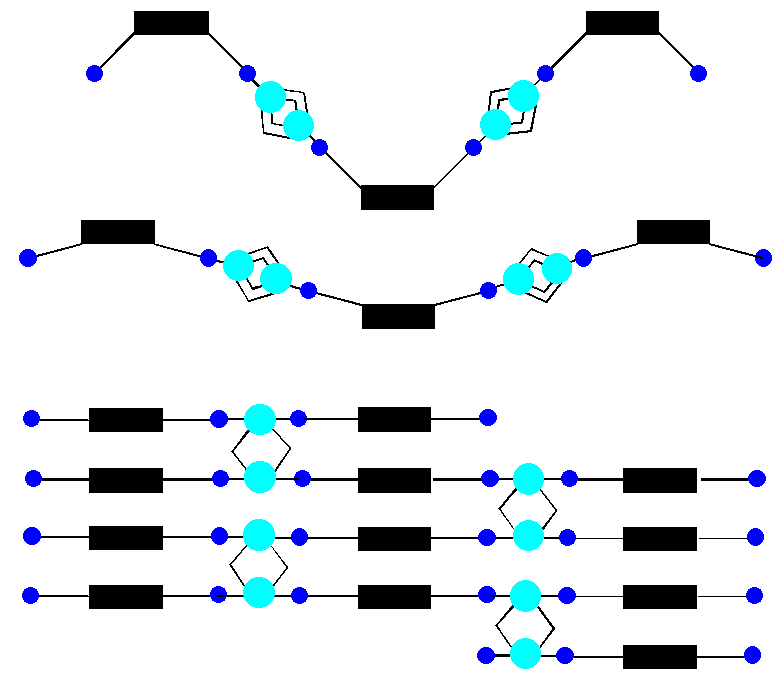 | 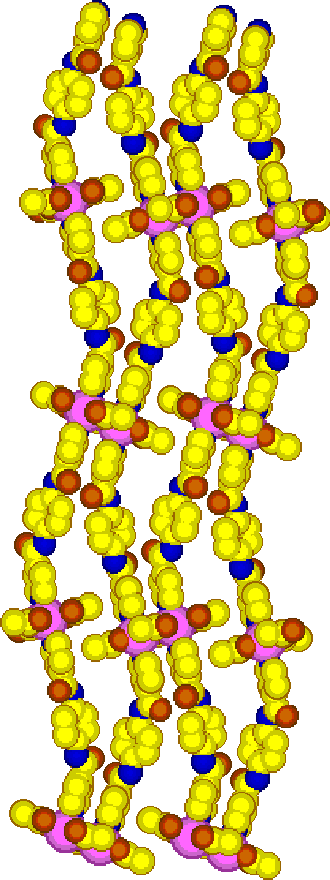 |
"Sequential Generation of 1-D Networks Based on a Differentiated Bischelate-Type Ligand Bearing Both 4,5-Diazafluorene and Dithiolene Units"
S. BAUDRON, M. W. HOSSEINI, Inorg. Chem., 2006, 45, 5260-5262. (download .pdf)
Abstract: A novel dithiolene ligand appended with 4,5-diazafluorene moiety has been synthesized and used for the preparation of discrete nickel and mercury complexes and a one-dimensional polymer in the presence of sodium cations.
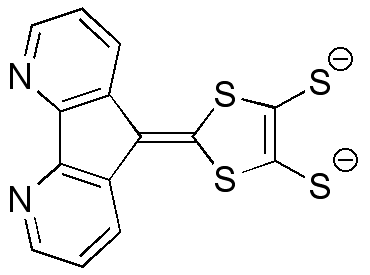 |  |  |
"Orthogonal packing of enantiomerically pure helical silver coordination networks"
A. JOUAITI, M. W. HOSSEINI, N. KYRITSAKAS, P. GROSSHANS, J.-M. PLANEIX, Chem. Comm., 2006, 3078-3080. (download .pdf)
Abstract: The combination of the chiral tecton 1 based on the (R)-6,6’-dibromo-1,1'-binaphthyl moiety bearing two isonicotinoyl groups with AgX (X= BF4-, CF3SO3-, PF6-) leads to the formation of enantiomerically-pure single stranded helical coordination networks. The helical strands, oriented orthogonally in all three directions, are packed in the rare cubic space group (I213).
 | 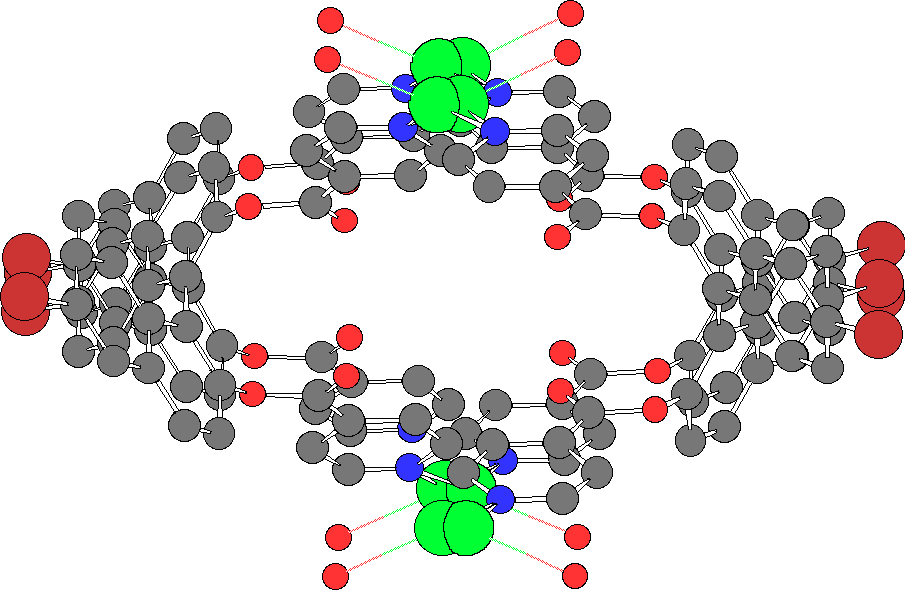 |  |
"Molecular tectonics : control of packing of hybrid 1-D and 2-D H-bonded molecular networks formed between bisamidinium dication and cyanometallate anions"
P. DECHAMBENOIT, S. FERLAY, M. W. HOSSEINI, J.-M. PLANEIX, N. KYRITSAKAS, New. J. Chem., 2006, 30,1403-1410. (download .pdf)
Abstract: Upon combining the dicationic bis-amidinium tecton 2 bearing four propyl chains with tetra- and hexa-cyanometallate anions neutral 1- and 2-D hybrid networks were obtained. In the case of [M(CN)4]2- (M = Ni(II), Pd(II) and Pt(II)), the control of the spacing between consecutive 1-D H-bonded networks by the presence of the propyl chains was demonstrated. For [M(CN)6]3- (M = Fe(III), Co(III), Cr(III)), 2-D networks presenting hexagonal channels have been obtained. In marked contrast with the case based on the use of 1 for which channels are filled with water molecules, in the case of 2, as expected, the solvent molecules were replaced by propyl chains.
|
|  |
|
"Porphyrin based Metallamacrocycles"
E. DEITERS, V. BULACH, M. W. HOSSEINI, New. J. Chem., 2006, 30, 1289 -1294.(download .pdf)
Abstract: Upon combining 5,10-dipyridyl-15,20-diphenylporphyrin 1 or its copper metallated complex 2 with metal halides (MX2: M = Zn, Cd, Hg; X= I or Br) five [2+2] metallamacrocycles of the square type were obtained and structurally characterised in the crystalline phase by X-ray diffraction methods. Whereas the free porphyrin 1 leads to the formation of homobinuclear metallamacrocycles with both CdI2 and HgI2, a homo tetranuclear metallamacrocycle resulting from the metallation of the porphyrin core is obtained in the presence of ZnI2. When using the premetallated copper complex 2, two heterotetranuclear metallamacrocycles are generated in the presence of CdI2 and HgBr2.
|
|
| 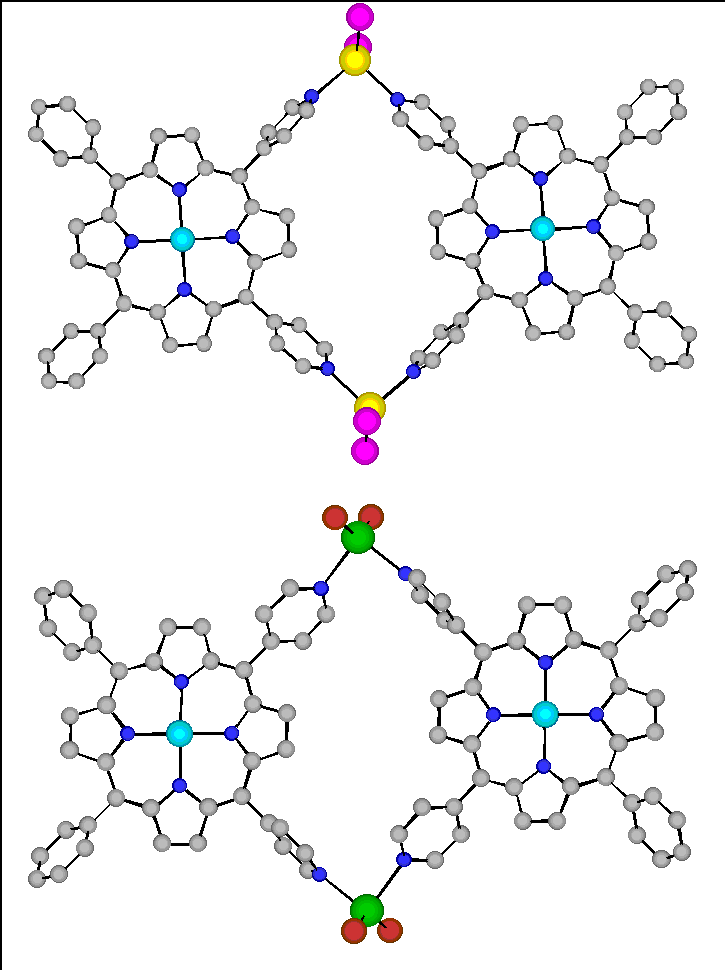 |
"Molecular tectonics: on the formation of tubular coordination networks"
G. LAUGEL, E. GRAF, M. W. HOSSEINI, J.-M. PLANEIX, N. KYRITSAKAS, New J. Chem., 2006, 30, 1340-1346.(download .pdf)
Abstract: Upon combining the organic tecton based on the [1,1,1,1]metacyclophane bearing four pyridine groups with silver cation, a tubular coordination network formed by double bridging of consecutive macrocycles by metal centres is obtained and structurally characterised in the solid state by an X-ray diffraction methods. The same tecton when combined with HgCl2 leads to the formation of a doubly interpenetrated 2-D coordination framework.
 |  |  |




